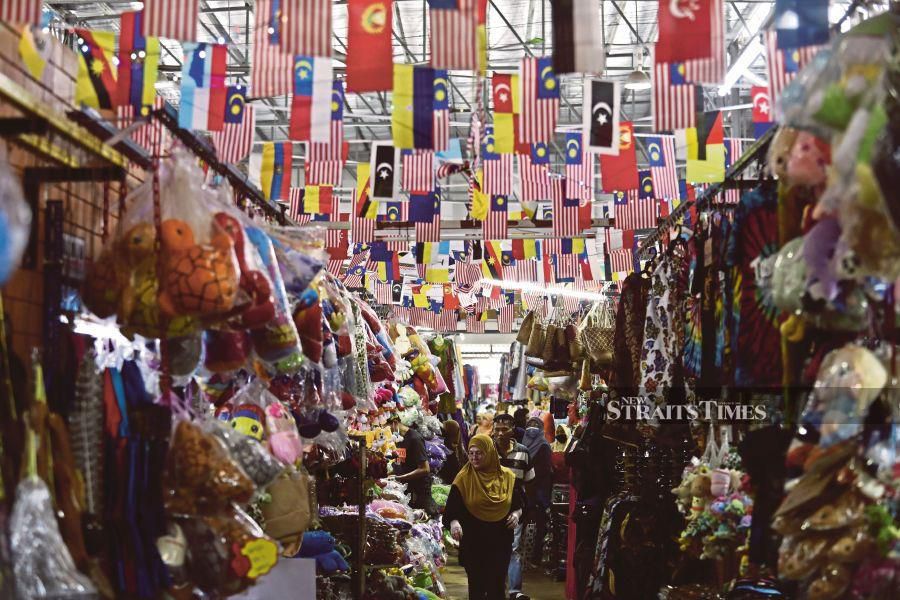I THOUGHT it would be useful, while the issue is alive again, to ponder about the Chinese in Malaysia in the larger context of the Chinese diaspora in the region and how well they have assimilated (or have not) into the region's nation-states.
I am rather struck by a short social media video I came across this past week, where a young Malaysian Chinese woman was asked point-blank by a foreigner what it is about her country she would want foreigners to know.
She answered spontaneously that Malaysia is a country composed of three main races: Malays, Chinese and Indians.
This is undoubtedly a fact, and something many Malaysians may quite effortlessly blurt out if similarly put on the spot.
What it unfortunately brings home is how (perhaps subconsciously) this race thing seems to be the defining feature about their country that most Malaysians identify with.
It also underlines the gulf Malaysia still needs to bridge in its nation-building efforts so many decades after Merdeka.
This is in marked contrast to the experience in the Philippines, which probably saw the longest history of mass Chinese migration, many traced to the 1500s with the Manila galleon trade initiated by the Spanish colonialists.
Tales abound of colonial frustrations trying to assimilate the Chinese migrants. Yet, by the end of the World War 2, "Tsinoys" (assimilated Filipino-Chinese) had become accepted as Filipinos to the extent that such well-known Tsinoys (to varying degrees) as Jose Rizal, Andres Bonifacio and Emilio Aguinaldo were now universally celebrated as Filipino revolutionary heroes.
In More Tsinoy Than We Admit, a 2015 compendium of Chinese-Filipino interactions over the centuries, Professor Wang Gungwu recounted how he was struck on his first post-war visit to Manila that the term "Filipinos of Chinese descent" had gained currency even before most Chinese in the region had become citizens of their adopted lands because where they had settled in Malaysia, Singapore and Indonesia, they were not even independent states yet.
"My young friends in Manila demonstrated a relaxed confidence in the Filipino nation, a contrast to what my generation of Chinese was yet to feel about an independent Malaya... there was nothing comparable to the mestizo Chinese who fought the Japanese with local rather than Chinese patriotism. Indeed, the strongest anti-colonial calls came from Chinese leaders in the Communist Party of Malaya, whose armed rebellion was modelled on that of the Communist Party in China", observed Wang.
While going through the biography, Anand Panyarachun and the Making of Modern Thailand, I was amused by how many prominent Thais may actually be more Chinese than they probably care to admit, several prime ministers and Anand included.
Chinese assimilation into Thai society may have been aided by a requirement that they register Thai-sounding names.
It is, of course, more well known that Indonesian Chinese are similarly required to adopt Indonesian-sounding names.
A friend and I have been sharing YouTube videos lately of pianist George Harliono. What intrigued us was the fact that his name is unmistakably Indonesian.
There is no such compulsion on Malaysian Chinese to similarly adopt names, which will more immediately identify them as Malaysian. Nor restrictions on receiving education in Chinese vernacular schools.
Even so, perhaps it behoves especially younger Malaysian Chinese to reflect if they may want to voluntarily do something over such matters so that they can better integrate as Malaysians?
Actions always speak louder than words. Many of our Chinese will no doubt protest that there is no contradiction in being equally proud ethnic Chinese and Malaysian. There is no question about that. But loud protestations aside, pesky questions will likely remain, and Malaysian Chinese should know there are steps they themselves can take to minimise, if not totally banish, such questions.
The examples from our regional peers are instructive.
The writer views developments in the nation, region and wider world from his vantage point in Kuching
The views expressed in this article are the author's own and do not necessarily reflect those of the New Straits Times






